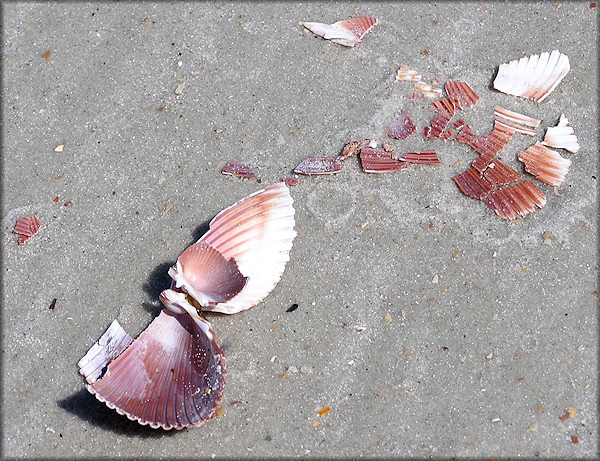|
Dinocardium robustum (John Lightfoot, 1786) Atlantic Giant Cockle |
| Dinocardium robustum is always on the menu for hungry gulls which are quite adept in locating them even when they are totally buried in the substrate. Once the shell is found, the gulls grasp the shell, and using the sea breeze for added lift, soar high in the air and proceed to drop the shell onto the hard packed beach to crack the shell open and gain access. This feeding strategy is also employed by the gulls in regards to other molluscan species such as Neverita duplicata (Say, 1822) [Shark Eye] - shown in the bottom image. However, the gulls quickly learn that this method of obtaining a meal is ineffective in regards to univalve mollusks. |
|
|
|
|
|
Little Talbot Island, Duval County, Florida 3/19/2004 |

![Gull with Neverita duplicata (Say, 1822) [Shark Eye]](images%20snail7/1128b.jpg)